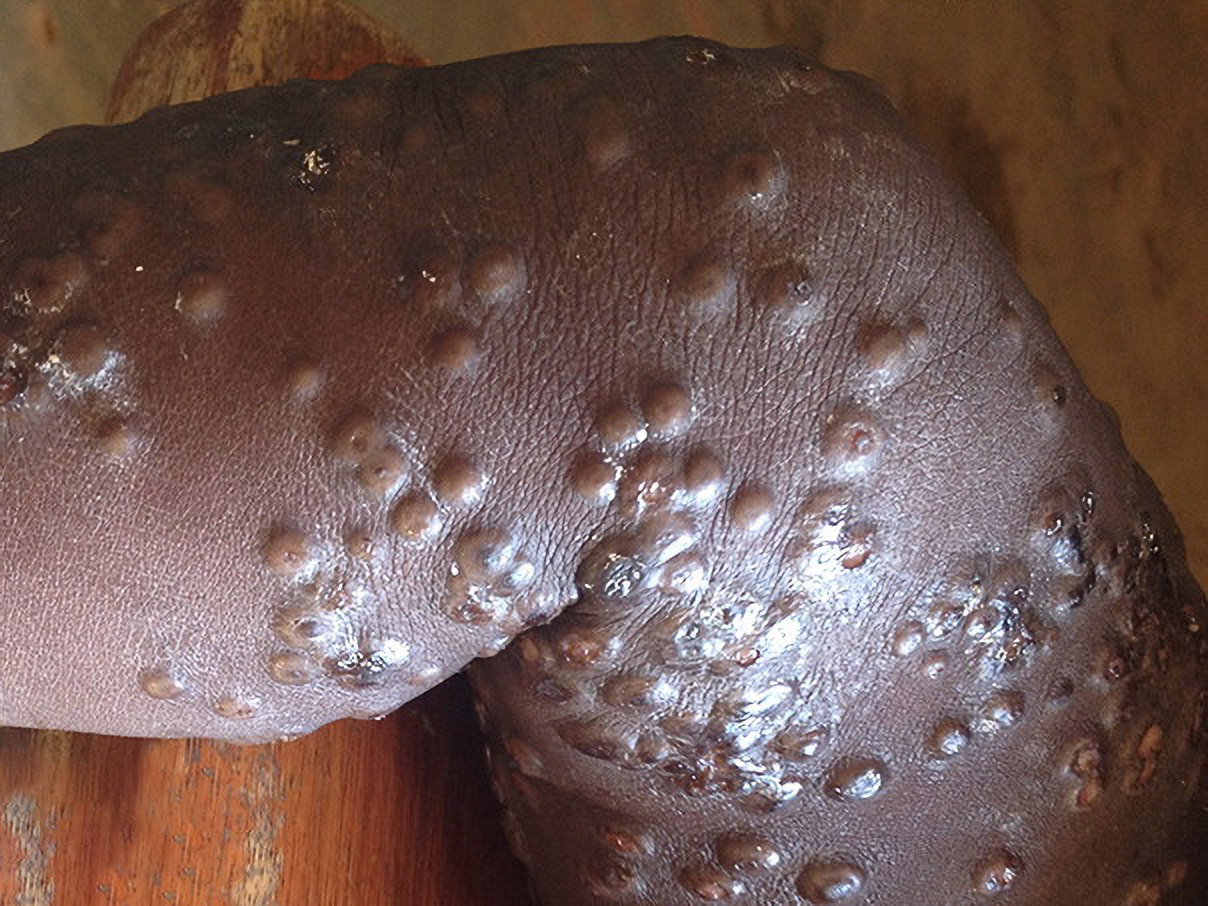Dieta keto beneficios
La dieta cetogénica muy baja en calorías se perfila como una opción ventajosa para el abordaje del síndrome de ovario poliquístico
MADRID, ESP. Especialistas analizaron el papel de la dieta cetogénica muy baja en calorías(very-low-calorie ketogenic diet) en tres comorbilidades que tienen una incidencia más alta entre los pacientes con sobrepeso y obesidad: síndrome de ovario poliquístico, hígado graso y diabetes de tipo 2, durante el Simposio Científico Internacional New frontiers in scientific research, celebrado recientemente en Barcelona, con el objetivo de hacer un análisis y puesta al día de las últimas evidencias sobre los beneficios de esta pauta dietética.[1]
Disfunción del tejido adiposo, obesidad y síndrome de ovario poliquístico

Dra. Alessandra Gambineri/Fuente: Pronokal Group
La Dra. Alessandra Gambineri, profesora asociada del Departamento de Medicina y Cirugía (DIMEC) de la Università di Bologna, en Bolonia, Italia, abordó el nexo entre la obesidad y el síndrome de ovario poliquístico, "una enfermedad crónica que afecta a cerca de 10% de las mujeres en edad fértil y que presenta fenotipos muy diversos con características distintas".
"La fisiopatología de este síndrome se caracteriza por la interacción de tres factores: exceso de andrógenos, disfunción de los tejidos adiposos y resistencia a la insulina, que interactúan entre sí y que se expresan de distinta manera en los diferentes fenotipos", puntualizó.
La especialista señaló que la disfunción del tejido adiposo es muy importante en esta patología, ya que está asociada a factores que se secretan, como ácidos grasos libres, citocinas proinflamatorias, algunas adipocinas que fomentan la resistencia a la insulina, glucocorticoesteroides, andrógenos y estrés oxidativo.
"Asimismo, el estrés oxidativo que caracteriza este síndrome se expresa todavía más cuando hay obesidad, que también produce una hipotoxicidad en el ovario que agrava la función ovulatoria. En este contexto, la dieta cetogénica muy baja en calorías puede ser útil en varios sentidos: reducción de peso, favoreciendo la pérdida de masa grasa, principalmente la visceral/abdominal. disminución de la lipotoxicidad y mejora del estado inflamatorio, la hiperinsulinemia y la resistencia a la insulina".
Esta fue la línea seguida para la realización del estudio* cuyos resultados expuso la Dra. Gambineri y que tuvo como objetivo analizar los efectos de la dieta cetogénica muy baja en calorías sobre las manifestaciones del síndrome de ovario poliquístico en el fenotipo de obesidad.
"La finalidad fue comparar los efectos de una dieta cetogénica muy baja en calorías y la dieta estándar baja en calorías (hipocalórica) como grupo control sobre peso corporal, resistencia a la insulina, ciclo menstrual, ovulación, morfología ovárica e hiperandrogenismo en una población de 30 mujeres con obesidad, síndrome de ovario poliquístico y resistencia a la insulina".
Las participantes del estudio tenían un diagnóstico de síndrome de ovario poliquístico según los criterios de National Institutes of Health (NIH) y edades entre 18 y 45 años; se les aleatorizó en dos grupos (15:15): experimental (dieta cetogénica muy baja en calorías) y control (dieta hipocalórica). "Las mujeres asignadas al grupo experimental siguieron la etapa cetogénica durante ocho semanas y posteriormente pasaron a la segunda fase con dieta hipocalórica durante ocho semanas más, mientras que las del grupo control (dieta hipocalórica) siguieron la dieta hipocalórica durante las 16 semanas".
Los resultados primarios fueron cambios en el peso y en la composición corporal, concretamente la masa grasa y la masa magra, medidas mediante bioimpedancia. "Como resultados secundarios se consideraron los cambios observados en distintos aspectos: distribución de la grasa abdominal, parámetros metabólicos, ovulación, morfología del ovario, hirsutismo, hiperandrogenismo, bienestar psicológico y distrés psicológico. También se analizó cómo se había reducido el estroma del ovario, la zona donde se sintetizan los andrógenos".
Los autores del estudio comprobaron que si bien el índice de masa corporal se redujo en ambos grupos, esta reducción fue mayor en el que siguió la dieta cetogénica muy baja en calorías. Se observó una pérdida de peso importante en ambos grupos, 12,4 kg frente a 4,7 kg. También se observaron diferencias significativas en otros parámetros: circunferencia de cintura (-8,1% en el experimental frente a -2,2% en el control), masa grasa (-15,1% frente a -8,5%) y testosterona libre (-30,3% frente a +10,6%).
En cuanto a la insulina, solo se produjo una reducción en el grupo experimental.
"Un dato muy importante es que respecto al hiperandrogenismo, sobre todo en lo que se refiere a la testosterona libre, se produjo una reducción significativa solo en el grupo de la dieta cetogénica muy baja en calorías y esta reducción se hizo especialmente patente en la primera parte del estudio, coincidiendo con el periodo cetogénico. La razón de este efecto está en el importante aumento de la concentración de las globulinas fijadoras de hormonas sexuales, las SHB6, que se unen a la testosterona presente en la sangre femenina, produciendo reducción de la testosterona libre, un efecto muy importante teniendo en cuenta que este síndrome es un trastorno androgénico y también que los tratamientos actuales para el síndrome de ovario poliquístico no consiguen reducir tanto la testosterona libre como lo hace este método dietético", señaló la Dra. Gambineri.
Para la especialista, entre todos estos efectos positivos en estas pacientes tal vez el más importante sea la gran mejora que se produce en la ovulación. "Al comienzo del estudio solo 38,5% de las participantes del grupo experimental y 14,3% de las del grupo de control tenían ciclos ovulatorios. Tras la intervención 84,6% consiguió ovular frente a 35,7% que logró este objetivo en el otro grupo".
La Dra. Gambineri sugiere que este método es "válido para reducir la masa grasa y mejorar rápidamente el hiperandrogenismo y la disfunción ovulatoria en mujeres con obesidad y síndrome de ovario poliquístico".
Mejora del perfil glucémico… ¿y reversión de la diabetes de tipo 2?
La Dra. Daniela Sofrà, endocrinóloga especialista en diabetología de la Clinique de La Source, en Lausanna, Suiza, repasó las evidencias de las que se dispone actualmente sobre el papel de la dieta cetogénica muy baja en calorías en el abordaje de la diabetes de tipo 2.
"Es el momento de repensar el tratamiento de la diabetes y centrar los esfuerzos en el manejo de la obesidad como factor asociado. Una de las hipótesis en las que se trabaja en este sentido es la del ciclo gemelo, que postula que la diabetes de tipo 2 es el resultado del exceso de grasa en el hígado, lo que a su vez se asocia a la resistencia a la insulina con disfunción del páncreas".
La Dra. Sofrà agregó que hay un estudio que documenta por primera vez la reversibilidad de la morfología del páncreas diabético tras una restricción calórica con la dieta cetogénica muy baja en calorías.[2] "La razón de este efecto es la utilización de la grasa visceral e intrahepática, que puede llevar a la remisión de la manifestación clínica de la diabetes de tipo 2, entendiendo por tal la definición que hace la American Diabetes Association (ADA): hemoglobina glucosilada < 6,5% sin terapia farmacológica".
Concretamente, los resultados de esta investigación mostraron que tras seguir la dieta cetogénica muy baja en calorías y conseguir con ella una pérdida de 15% del peso (media de pérdida ponderal de las participantes), los niveles de la glucosa hepática recuperaron niveles normales en siete días y que la función de las células beta volvió a ser casi normal en ocho semanas.
"Estudios posteriores han demostrado la durabilidad de la remisión de la diabetes de tipo 2 gracias a la reactivación de la función secretora de la insulina de las células beta que se habían desdiferenciado frente al exceso crónico de nutrientes. Concretamente, seis de cada diez pacientes mantenían la hemoglobina glucosilada < 6% después de seis meses sin necesidad de terapia farmacológica", agregó.
Asimismo, la especialista destacó que la probabilidad de lograr la remisión está determinada principalmente por la duración de la enfermedad: "Los años de diabetes son uno de los principales predictores de la respuesta que el paciente va a tener con esta intervención dietética. Estudios han demostrado que la remisión es posible en pacientes con diabetes de menos de seis años, aunque hay otros trabajos que apuntan que puede conseguirse hasta con diez años de duración".
Con base en estos datos, la Dra. Sofrà hizo hincapié en los efectos pleiotrópicos de la dieta cetogénica muy baja en calorías sobre el control de la glucemia, favoreciendo la posible remisión de la diabetes o la reducción de fármacos, así como la reducción del índice HOMA-IR (resistencia a la insulina) y de la circunferencia abdominal en personas con diabetes de tipo 2.
Terapia potencial para el hígado graso no alcohólico
La tercera comorbilidad de la obesidad que puede beneficiarse de la dieta cetogénica muy baja en calorías es la esteatosis hepática o enfermedad del hígado graso no alcohólico, expuso el Dr. Hardy Walle, especialista en Medicina Interna y director y fundador del centro Bodymed AG, en Kirkel, Alemania y uno de los autores de esta investigación.
"Investigaciones recientes muestran que la grasa ectópica y en particular la enfermedad del hígado graso no alcohólico podrían considerarse una causa —o al menos una de ellas— de la mayoría de las enfermedades que afectan a la población como consecuencia del sobrepeso y la obesidad, hasta el punto de que algunos autores han afirmado que sin hígado grado no hay diabetes de tipo 2", destacó.
El Dr. Walle señaló que entre 30% y 40% de la población adulta tiene enfermedad del hígado graso no alcohólico, un porcentaje que aumenta considerablemente en personas con obesidad, llegando a 70% de prevalencia y aumentando, en el caso de la diabetes de tipo 2, a casi 90%. "Incluso el normopeso no excluye de padecer hígado graso; de hecho, alrededor de 15% de las personas con enfermedad del hígado graso no alcohólico no tiene sobrepeso".
En un escenario en que no existen fármacos aprobados para el tratamiento del hígado graso (el abordaje estándar actual se centra en las intervenciones en el estilo de vida), una dieta hipocalórica a corto plazo (o ayuno hepático) se considera un método eficaz para el manejo de esta patología, como demostró un estudio de la Universität des Saarlandes, en Saarland, Alemania, comentado por el experto para ilustrar esta afirmación.
"Los participantes (60 pacientes con esteatosis hepática) siguieron una dieta hipocalórica (de menos de 1.000 kcal/día) durante 14 días con una fórmula rica en proteínas y fibras especialmente desarrollada para el tratamiento de la enfermedad del hígado graso no alcohólico. Después se realizó elastografía (fibroscan) con medición del parámetro de atenuación controlada para cuantificar la enfermedad del hígado graso.[3] Los resultados demostraron no solo una mejora significativa de los parámetros de la enfermedad del hígado graso no alcohólico, sino que también mejoraron de forma notable todos los parámetros metabólicos relevantes (lípidos séricos, enzimas hepáticas)", explicó el Dr. Walle.
"Estas evidencias nos llevan a afirmar que el concepto de ayuno hepático (mediante una dieta hipocalórica) marca un punto de referencia para una futura terapia de abordaje de la enfermedad del hígado graso no alcohólico, concluyó el especialista.
*Estudio llevado a cabo con la colaboración de Pronokal Group (Nestlé Health Science).Los doctores Gambineri, Sofrà y Walle han declarado no tener ningún conflicto de interés económico pertinente.
Siga a Carla Nieto de Medscape en español en Twitter @carlanmartinez.
Para más contenido siga a Medscape en Facebook, Twitter, Instagram y YouTube.
Skin Care Physicians of Costa Rica
Clinica Victoria en San Pedro: 4000-1054
Momentum Escazu: 2101-9574
Please excuse the shortness of this message, as it has been sent from
a mobile device.





After sharing a waiting room with an ophthalmologist for 27 years (Linda Brodell, MD), I can attest to the fact that many of my rosacea patients with red eyes, gritty sensation, itching, dryness, pruritus, and sty/chalazion often were made more comfortable after specific ocular treatment was initiated. Dermatologists should have a low threshold for referring their rosacea patients to the ophthalmologist for an examination when they have any of these signs or symptoms to make a definitive diagnosis and plan appropriate treatment.